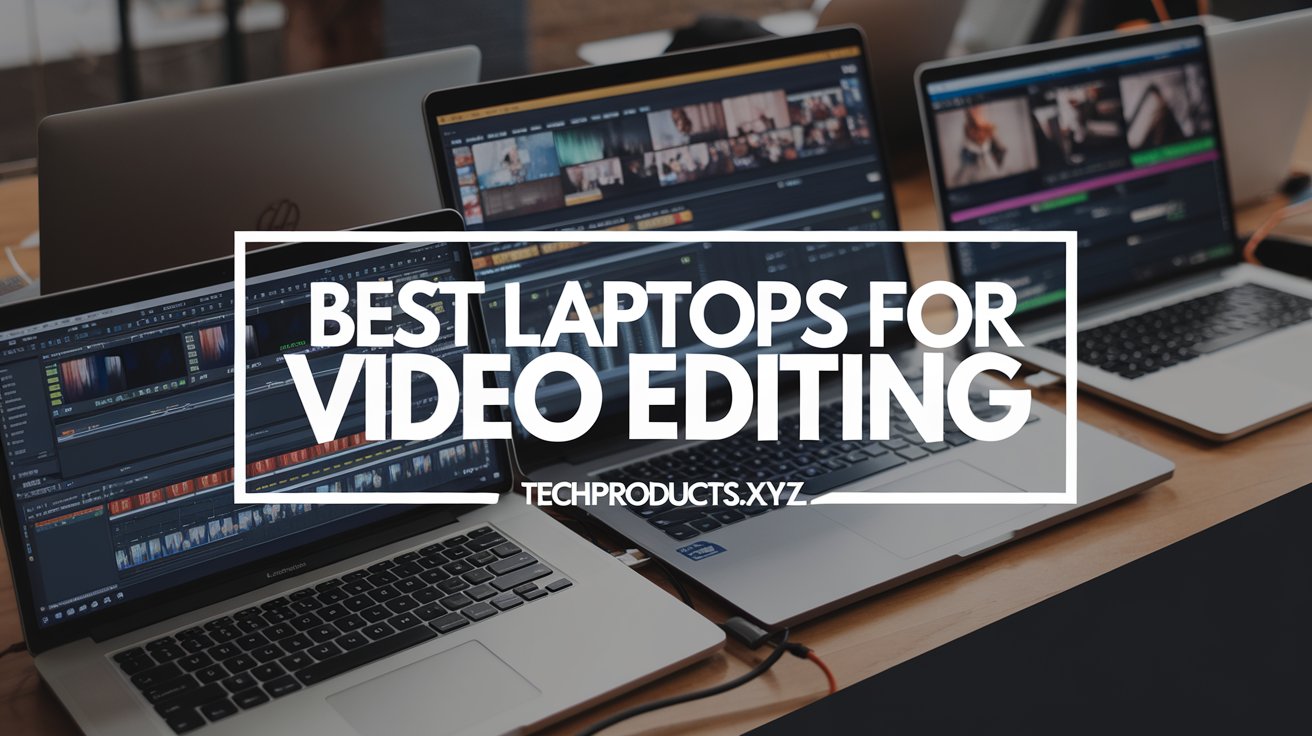Video editing, undoubtedly, is an activity that demands some hardware performance at a rather high level. For a professional or an enthusiast who gets himself or herself involved in video editing, it hence becomes rather important to pick out the right laptop for video editing activities. So, it’s high time to go through some of the best laptops in terms of points of performance, portability, quality of the display, etc, that could be ideal for video editing:.
Be a filmmaker, content creator, or YouTuber; these laptops are sure to chomp out the top quality videos efficiently.
Table of Contents
1. INTRODUCTION
Video editing requires performance laptops with strong processors and graphics cards and more in regard to both RAM and larger storage capabilities. The increasing upload rates of videos on platforms like YouTube, TikTok, and Instagram make it one of those tools that truly fulfill the professional needs which video content creators were waiting for.
This laptop guide on video editing would help content creators in every nook and corner of USA and Australia churn out quality output within just a few minutes of waiting.
It could be 4K editing, multi-layer application through Adobe Premiere Pro or DaVinci Resolve, color grading, and something more. Whatever the need may be, a good video-editing laptop can do magic in the flow.
So, here are the top picks for 2024 with specs, price ranges, and performance and suitabilities toward all kinds of needs of editing.
2. Why choosing the right laptop matters so much to video editing?
Well, it’s processing-intensive, graphics-intensive, and munches lots of memory so you really need pretty good quality display. You feel rather frustratingly badly when wrestling with troubles of slow delays while editing, rendering, or exporting your videos. Here are the basic reasons why choosing the right laptop matters for video editing:
1. Performance
It needs video editing, rendering, playback, and export thereby a fast CPU, the right amount of RAM, and dedicated graphics card or GPU. Bad performance will reduce your workflow and keep the productivities low.
2. Storage
Video files, mainly 4K and above, are gargantuan. Thus, a laptop with satisfactory SSD storage will provide tremendous read/write speed, hold that video data, and keep it ready for you.
3. Quality Display
Video editing requires highly accurate color render and high display resolution, otherwise the output may end up totally alien to what you have in mind
4. Mobility and Battery Life
To most content creators and editors, mobility and battery life of a portable laptop is pure luxury. It’s huge to be able to edit anywhere-be it the coffee shop or any travel destination.
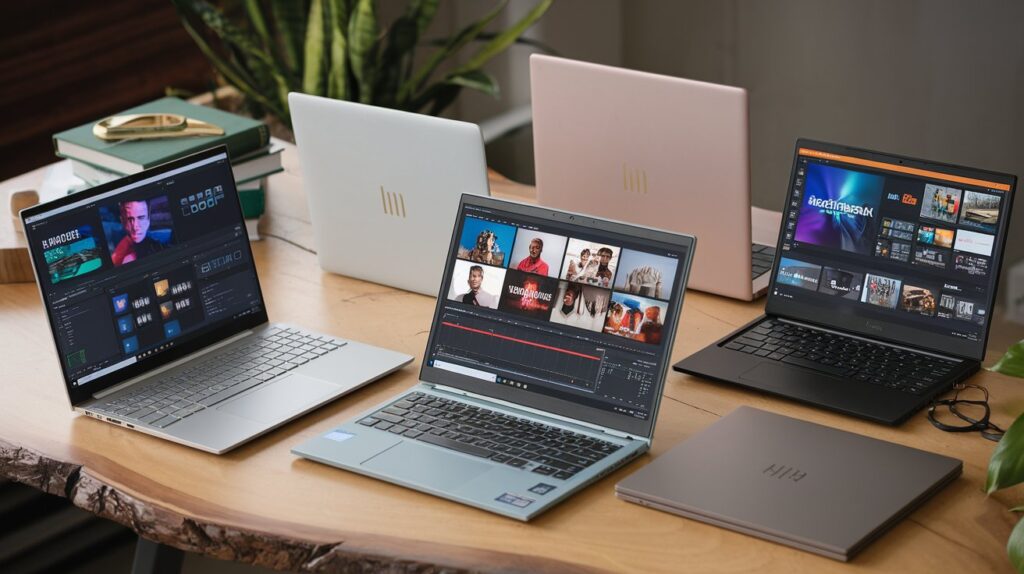
3. Laptop Specification for Video Editing
Warm-Up Let me run you through the major specs one should look for in acquisition of a video editing laptop.:.
1. CPU
This is your laptop brain as well as that hardware component that will render out the video for you so needs to have a powerful one from the get-go.
Video editing is a lot core-load demanding, so ideally speaking, you’re looking at something like an Intel Core i7 or AMD Ryzen 7. And actually, if you’re looking for professional-grade performance, try going for the Intel Core i9 or AMD Ryzen 9.
Best Choice: Intel’s new 12th Gen, or 13th Gen processor, or AMD’s Ryzen 7000 series for multi-thread performance.
2. Graphics Card (GPU)
Dedicated GPU accelerates rendering of video and visibly while working in HD, 4K, or 8K. The most popular are NVIDIA’s GeForce RTX 30 series or AMD Radeon RX series. Best options that offer laptops with an NVIDIA RTX 3060 and up provide smooth editing performance.
Best Pick: For professional video edit would require use of NVIDIA RTX 3070, 3080, or 4090.
3. RAM
This is one of the jobs that can be categorized as using most memory to edit together; render plus high-resolution putting footage. Simple edit works would require at least 16 GB of RAM but with 4K video editing, 32 GB and even 64 GB or more would be needed to ensure full multitasking and lightning-fast editing.
4. Storage SSD Hard drives
Storage SSD Hard drives are designed to be faster and handle huge video files rather than quickly, and SSD as compared to HDD is quicker than HDD so, it would be a norm for every editing laptop.
The minimum consideration should be of 512 GB that should be an SSD, but more than 1TB for large projects.
5. Screen
One of the must haves of a screen is that it needs to grade quality for color and has to be clear to view. It needs to be at least 1080p, Full HD, and while that’s overkill for 4K professional video editing, it’ll be of sufficient help to IPS panels for color accuracy and viewing angles over TN panels.
6. Battery Life
Video editing is pretty much an activity that requires so much work, and therefore a laptop with battery endurance to last a little longer saves one ample time while working on go.
The only downside of high-performance laptops is just how frustratingly unproductive it becomes to sit through hours of battery life in long strings while working hard.
7. Mobility and Strength
You must know that if you are frequent traveler or most of your time gets spent outside the four walls of your office, then you would be looking for a laptop that is extremely light yet very strong. It is power with mobility when you have to take along projects.
4. Why do I need a good laptop for video editing?
Video editing is a somewhat resource-intensive activity. To begin with, the basic demands will be the processing powers with strong graphics, a very good display, and enough space in memory. Video editing, rendering, or exporting will turn out to be an agony task if you don’t get well-equipped with the right kind of laptop.
Some of the most important reasons why a video editing laptop turns out to be so very important for the later-mentioned selection amongst these are as follows:
1. Performance:
Render, playback or export video edits, irrespective of the domain of work, always ask for extreme CPU speed with RAM or a dedicated GPU. The overall performance is usually woefully inadequate, making your workflow really slow and low productivity levels.
2. Storage
It is all right if a laptop with a sufficient amount of SSD can have good reading and writing speed aside from having space for video projects. Video files-even when in 4K or more-actually take up quite a bit of space.
3. Quality Display
So all this becomes very critical while you’re editing those videos, the color reproduction is good, high-resolution display. And if the low-quality display starts to prevail, then all your color grading is generally wrong, and you tend to have a product that looks quite different from what you’d had in mind.
4. Mobility and Battery Life
If you are shooting on location, say, the content creator or editor needs to carry with him a portable, decent-life laptop. Being able to edit anywhere-from a café to while traveling-can actually get your juices flowing, so to speak.
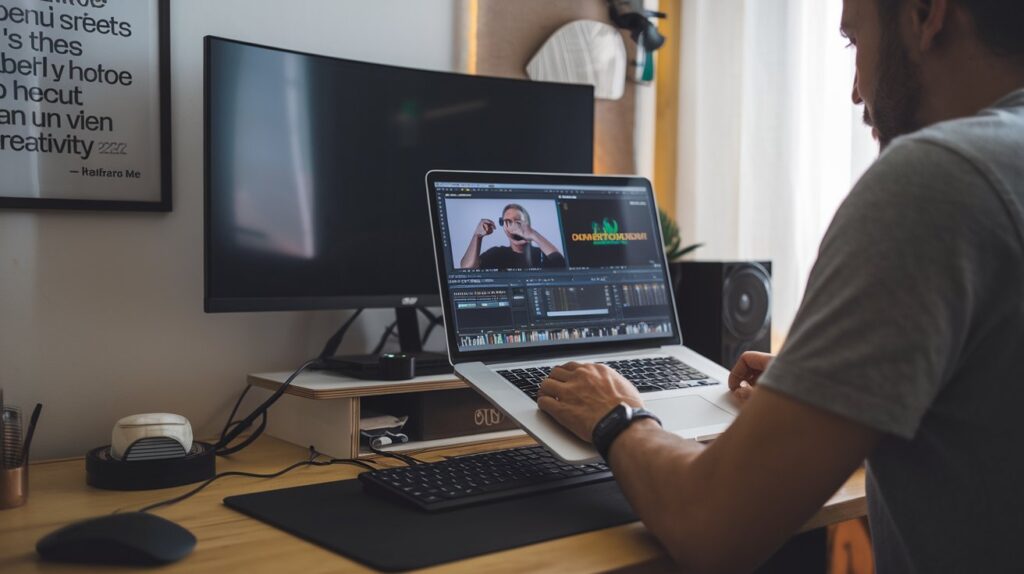
5. Video Editing Laptop Specifications of NOTE
With my list of some video editing laptops done, let me now first tell you what you have to know before choosing that very important video editing laptop.
1. CPU: This is going to be the heart of your laptop, and this is going to be quite demanding because cutting and rendering are quite complex operations.
The more number of cores it has, the better for you; so ideally, you would want an Intel Core i7 or AMD Ryzen 7. For that reason, you want to give it the best; the best available in the market for a laptop would be the Intel Core i9 or AMD Ryzen 9.
Best Pick: For multi-threaded performance, at least, it will be matched with Intel’s best consumer processors using the 12th Gen, and, if that is not enough, there are the Ryzen 7000 series from AMD.
Dedicated GPU for Video Rendering: A dedicated GPU can speed up video rendering and will be especially fast if the edit is HD, 4K, or 8K. Common options:
NVIDIA GeForce RT 30 series or AMD Radon RX series, etc. For extremely smooth performance, you need to have an NVIDIA RT 3060 and above. Best Option: NVIDIA RT 3070, 3080, or 4090 for Heavy Video Editing.
3. RAM: To edit such files, memory usage is truly going to be quite intensive, especially when working at 4K resolutions. For common use applications, at least 16GB will have to be allocated; however, if one’s workflow is to run all tasks and edits in real-time with video while working at 4K, then at least 32 to 64GB of RAM should be enough.
4. Storage: Video files are pretty large at present so if the files are very large, then you need a fast storage. Technologically, SSD is way ahead of the conventional HDD so, it should be at least a minimum in your video editing laptop. At least 512 GB SSD would do but 1TB or more if possible spacious enough to hold big projects.
5. Screen: As thin as possible. Perfect display will result in lifelike colors and clear resolutions. For work, you will require laptops with a minimum of 1080p resolution-full HD. But the best professionals are the color grading persons who don’t compromise with 4K screen.
6. IPS offers better color accuracy and wider viewing angles compared to TN panels.
Battery Life: There will always be some operations of video editing which work very hard; a laptop that can work for hours or even more on its battery can especially easily carry when the users require editing on the go. Most of the high-end laptops fail in respect of giving reasonable battery life that lasts under heavy usage.
7. Mobility and Power: You never know where you are moving or video editing while on the move as well. Then, mobility, but with the power cost, number one: it will require that you have a lightweight laptop that is more powerful. Models walk on a fine line between the limits of power and mobility. It’s a winner for those who never seem to stay in one place for too long.
6. Best Laptops for Video Editing in 2024
1. MacBook Pro 16 inches (2023)
It mainly sells its M2 Pro or M2 Max chip. Good to see its performance but earns much due to smooth video edition, good color accuracy, and compatibility in Final Cut Pro and Adobe Premiere Pro.
• Processor: M2 Pro or M2 Max
• Chip: Integrated 16-core or 32-core GPU
• RAM: 96GB
• Storage: Up to 8TB SSD
• Display: 16-in. Retina XDR display, 3456 x 2234
• Starting at $2,499
Pros
• No one wakes up faster than the Final Cut Pro User
• 1000 nits of brilliance XDR display
• Battery lasts all day
Cons
• Kind of pricey
• Not nearly enough ports for pros
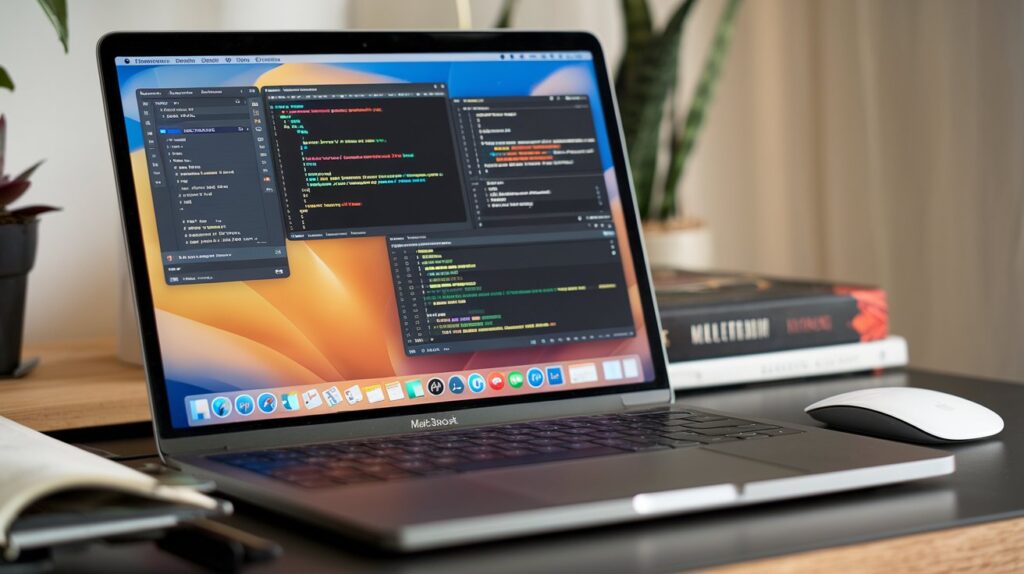
2. Dell XPS 15 (2024)
Well, that is probably what you were thinking while designing the Dell XPS 15 to be a dream for every video editor, and you can clearly see why: it’s stylish in itself, but what is mind-blowing is the internal so, and it is one of the best video editors that can chop their 4K videos and then render them back. Features Marijuana : CPU: Intel Core i7 or i9.
Carbon Coating: NVIDIA GeForce RTX 3050 Ti
RAM: Up to 64GB
Display: 15.6-inches OLED, 3456 x 2160 resolution
Price: Starting at $2,199
Pros
Totally insane 4K OLED.
Nice portability size is really great.
Thermal design just awesome.
Cons
Overpriced for what’s on offer .
The battery life’s average if made to extreme usage.
3. Razer Blade 15 Advanced Model
That is quite enough, well more than enough for those who put aesthetics and power into their hearts. The system applies the newest Intel processors combined with the latest NVIDIA RTX 3080 GPU. It is quite efficient when one has to deal with heavy files of video editing associated with 4K.
• Intel Core i9
• NVIDIA GeForce RTX 3080
• RAM 32GB
• SSD 1TB
• Screen: 15.6 inches 4K OLED, 3840 x 2160
• Price: Starting at $2,999
Pros
Exquisitely beautiful 4K OLED display
Super thin, strong aluminum unibody
Optimised thermal performance
Cons
Needs to be developed with the battery life
4. HP Spectre x360 16
• intel Core i7-12700H
• intel Arc A370M
• 32GB RAM
• 1TB SSD
• 16-inch OLED 3072 x 1920
• Starting at $1699
Pros:
This is a 2-in-1 design, so this laptop comes with a touchscreen.
Resolution is quite high; this laptop comes with an amazing OLED screen.
Good battery life for the class.
Intel Arc GPU-it comes with which is nowhere near as potent as their competition via NVIDIA.
2-in-1 is too heavy
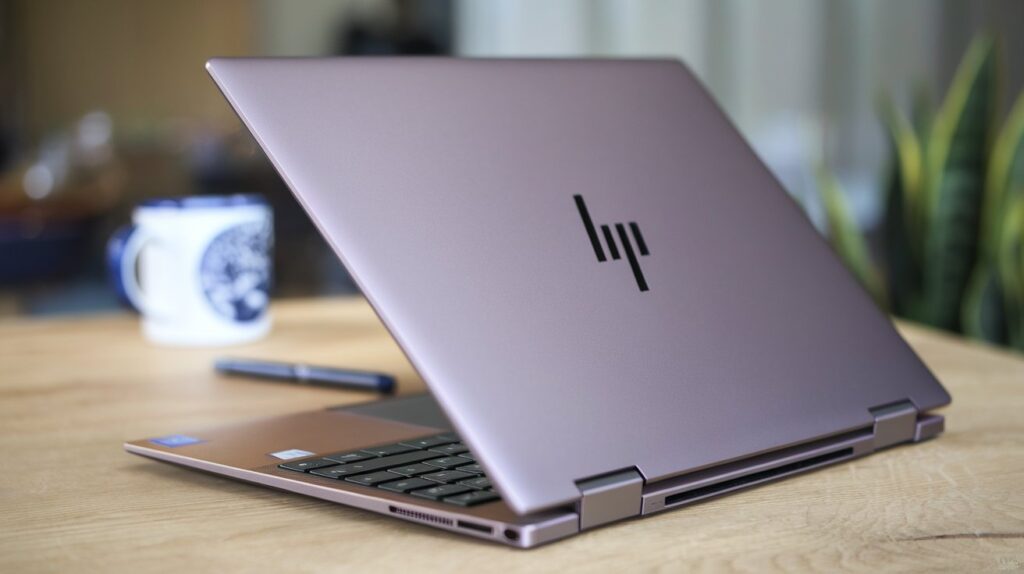
5. Lenovo Legion 5 Pro
The Legion 5 Pro, however is for those who are caught in the middle of the world of prices and performance. It brings awesome power at not too cripling price.
• AMD Ryzen7 5800H
• NVIDIA GeForce RTX3060
• 32GB RAM
• 1TB SSD
• 16-inches QHD, 2560 x 1600
• Starting at $1,599
6. MSI Creator Z16
MSI is launching a Creator Z16, and it is coming very much thought for the pro, but high-performance power CPUs and GPUs will also attract creative workforces.
CPU: Intel Core i9
GPU: NVIDIA GeForce RTX 3070
RAM: 32 GB
Storage: 2 TB SSD
Screen: 16 inches QHD, 2560 x 1600
Price: From $ 2,299
7. Frequently Asked Questions (FAQs)
1. What RAM do I need to edit video?
Generally, with video editing to feel silky, 16 GB of RAM is pretty bare minimum, especially when it has to do with HD or 1080p. With projects beyond that, though – 4K or 8K, at least 32GB, or maybe 64 GB would be required to aid in fluidizing working between applications, speed up the rendering, and more importantly – to make the files’ processing fluid for playback in bigger files.
2. Do you require extra GPUs to edit videos?
Well, absolutely yes. A person will be in need of another Graphics Processing Unit or GPU to edit videos mainly to render high definition videos, instant viewing, and visual effects processing. Even as far as the general video operations are concerned, Integrated GPUs are pretty much acceptable. But for professional video editing, professional, dedicated GPUs like Nvidia RTX and AMD Radeon would be required.
3. Windows or macOS? What is the best platform for video editing?
Affirmative to both these as they can work for professional video editing. Windows laptops abound infinitely more in choice and price, and the shelf life for Apple laptops running macOS is better optimized with video editing software like Final Cut Pro.
This ultimately depends on the user’s choice and compatibility with all the various software applications he may need to use.
4. Is a gaming laptop suitable for video editing?
For the most part, yes. Most gaming laptops are pretty convenient for video editing purposes because they pack pretty powerful processors and come with a dedicated GPU. For the most part, laptops that are designed for gaming are equipped with high-range configurations that will hopefully get through rendering and applying visual effects without much of an issue.
Laptops intended for creative pros mostly don’t offer a color-accurate display as its gaming counterpart.
5. Which best 4K video editing laptop?
Most productive laptops, among others, like MacBook Pro 16 with M2 Max and Dell XPS 15, to use more powerful CPUs, enough RAM, and high-performance GPUs for processing large-sized 4K video files possibly with an effect of high-resolution displays. Finally, sharp color renderings
6. How critical is the display quality while cutting a video?
Color correction and grading is the highest concern while video editing, if one talks about general quality of display.
A 4K display with wide color gamut Adobe RGB or DCI-P3 shall have real-color display, which is very much required for professional work in videos.
7. How much storage size is good for video editing?
Base storage should be at least 1TB, but one would hope that’s SSD. Any system which cuts down loading and rendering times dramatically improves the workflow efficiency-this cuts down loading and rendering times dramatically. Expandable storage or external SSD support is a good option if budget allows.
8. Do you need an external monitor for video editing?
Not absolutely necessary, but it is helpful if you have an external monitor as it will be useful for your editing process, particularly if one works in a multi-window configuration or needs that little extra screen real estate to edit a bit more precisely.
Hundreds of video editors of this type will edit on an external monitor in order to be able to pick up increased accuracy in the colours and just easier access to the editing options at hand.
9. Is it possible to edit video on a laptop using integrated graphics?
Video cards installed on laptops can only support simple video editing, nearly limited to cut and trim with very basic video effects. More complex video editing, say in 4K or 8K would call for a dedicated GPU to render smoothly and even quicker.
8. Conclusion
Best Laptops for Video Editing: These vary while keeping in balance of some of the main factors: rpm, Graphics Performance, RAM, and Display. With any count of 4K or 8K high-resolution footages, anything can be coped with, or one can initiate from the most elementary editing task. One finds different choices in the present market which fall into several budgets and personal needs.
While others are touting the MacBook Pro 16 (M2 Max) and even the Dell XPS 15 for unparalleled processing power, a real budget-conscious user will enter the fray with highly-recommended options or two, such as the ASUS TUF Gaming A15 or even Acer Predator Helios 300, powerful enough to deliver performance strong enough to be considered a start in video editing, thus an entry-level investment.
So it depends on your workflow, software requirements, and budget which really is the last laptop for video editing. Much ado about high-performance laptops when being looked at with dedication for a GPU, higher RAM, and fast SSDs; it does enhance the experience-not only enhancing your editing process but makes the whole process much productive.
Or simply put, whether one is an exclusively full-time filmmaker or a meager simple YouTuber- the right laptop will make all the difference for the efficient video content

